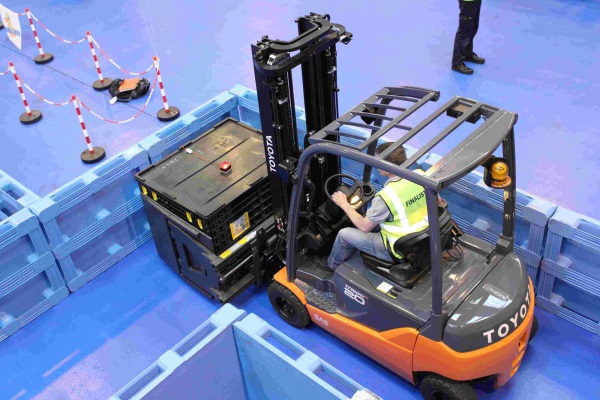Forklift Training Information
The largest forklift operator training website in the world
![]()
![]()
How To Conduct Pre Shift Checks
For those interested there is a complete set of training slides on this subject in the forklift pre-shift checks section.
Forklift preshift checks are essential to forklift safety. Forklifts should receive a pre shift check at the start of the day or shift, whichever comes first. A log book should be kept in which faults can be recorded. Any faults, however minor, should be reported. The following is a list of pre- shift checks which can be adapted for any type of truck. You can download a typical pre shift, (pre use), check document here.
-
All Trucks
- Faults Previous Day. Check the previous page, (or book). This will identify what may have been wrong the previous day or shift. You should check these items carefully to ensure that the fault has been rectified
- Obvious Leaks. Check the floor, beside and under the truck.
- Hydraulic Fluid Level. Check the level in the reservoir.
- Mast and Carriage. Visually check for any damage or foreign items. Check also for appropriate lubrication.
- Chains and Fixing Bolts. Visually check for damaged links, obvious stretching and appropriate lubrication. Visually check the fixing bolts for any sign of damage.
- Forks. Visually check for any sign of cracks, especially at the heels, or any other sign of damage or excess wear. Check securing pins.
- Backrest/Extension. Visually check for damage or debris. Bent or otherwise damaged metal is weakened and may be dangerous.
- Attachments. Check for the actual security of the attachment, at its fixing or locking points, and check any hydraulic or other connections. Some attachments may need additional checks. Only check and use attachments if you have been trained to do so.
- Tyres/Wheels/Nuts. Check all tyres for obvious damage, including cuts and tread wear. Check wheels for damage, especially to the rims, and check that wheel nuts are tight.
- Seat and Seat Belt. Check that the seat is correctly fixed to the truck and not loose or damaged. Check that the seat belt or other restraint is properly secure and functions correctly.
- Steering. Check the steering feels normal and there is no undue play or unusual movement.
- Service Brakes. Check the brakes feel normal and work efficiently
- Parking Brake. Check the parking brake works efficiently and releases correctly.
- Operating Controls. Check that all foot and hand controls operate correctly and are not obstructed in any way.
- Operating System. If the truck is fitted with computerised systems check to ensure that they have initialised and are working correctly.
- Warning Lights. Check for the correct operation of all warning lights. If a light stays on, and you are not sure of its meaning, check the user manual or seek further advice. Do not use the truck with a warning light illuminated if you do not know it is still safe!
- Gauges/Instruments. Check that all gauges and other instruments are working correctly. Lights/Beacon. Check for correct operation.
- Horn. Check for correct operation.
- Alarms. Check for correct operation
- Other Warning Devices. Make sure you know what is fitted to the truck. Check all for correct operation.
- Safety Guards and Covers. Check all are properly fastened and secured. A flapping cover can be a hazard to your colleagues as well as yourself.
- Bodywork. Visually check around the vehicle. Damaged bodywork may indicate other problem areas on the truck. Check the areas carefully. Damaged bodywork may indicate damage to racking or other equipment. Report what you find so that your supervisor can check it out.
- Fuel Level. Check the level and refuel as needed. Remember to wear protective gloves and keep away from cigarettes or other fire hazards.
- Engine Oil Level. Check and top up as needed.
- Coolant Level. Check and top up as needed.
- Battery. Ensure the battery is secure and clean. Check the level of distilled water and top up as needed. Wear eye protection and gloves.
- Fan/Other Belts. Check for correct tension and obvious damage.
- Inching Pedal. Check for correct operation.
- LPG Bottle Security. Check the bottle is secure and clamps are fully tightened.
Ensure connections are secure.
Electric trucks - Electrolyte Levels. Check the electrolyte levels of all cells.
- Cable Connections. Check they are clean and properly secure.
- General Cleanliness. Ensure the battery area is clean and clear from debris.
- Battery Security. Ensure the batteries are secure within their compartment and that any protective hatches are properly closed.
I C Engine powered trucks